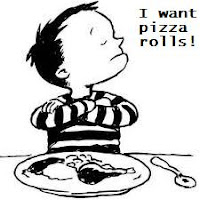Aspergers Children and Poor Eating Habits

Question My child with Aspergers loves pizza rolls. Problem is that's about all he eats (cheese only - doesn't like pepperoni or sausage). He would eat pizza rolls for breakfast, lunch and dinner if we let him. Is there any way to lure him into eating some fruits and/or vegetables? Answer Most Aspergers (high functioning autistic) children prefer just a few food items. And it can become quite a power struggle for parents when they attempt to get their child to try anything new. However, there are some ways that parents can "sneak" some healthy stuff into their child's belly. Here are a few tips that may work: 1. Don't get hung up on the time of day your Aspergers youngster eats – or how much he eats in one sitting. It is perfectly fine if your Aspie doesn't eat three square meals every day as long as over the course of a week or two he eats a few things from each food group. 2. Concoct creative camouflages. There are all kinds of poss...